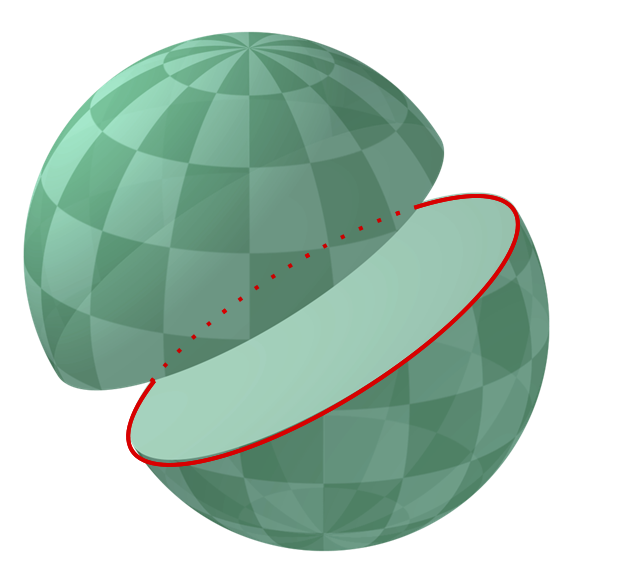A great circle of a sphere is the intersection of the sphere and a plane that passes through the center point of the sphere. A great circle is the largest circle that can be drawn on any given sphere. Any diameter of any great circle coincides with a diameter of the sphere, and therefore all great circles have the same circumference and have the same center as the sphere.
For most pairs of distinct points on the surface of a sphere, there is a unique great circle through the two points. The exception is a pair of antipodal points, for which there are infinitely many great circles. The shortest distance between two points on the surface of a sphere — measured along the surface of the sphere — is always along a great circle of the sphere, and is therefore called the great-circle distance.

A transatlantic ship, for example, does not travel from Southampton, England to New York, USA alongside an east-west latitude — which appears to be the shortest route on many world maps (e.g. using Mercator projection) — but over the great circle that runs through both places. This great circle runs relatively high north over the Atlantic Ocean. The map below initially shows the part of the great circle that forms the shortest distance between Southampton and New York. You can drag the end points at will.
The great-circle distance $$d$$ between two points on a sphere can be calculated using the formula: \[d = r \cdot \arccos(\sin(x_1) \cdot \sin(x_2) + \cos(x_1)\cdot \cos(x_2) \cdot \cos(y_1 - y_2))\] where $$(x_1, y_1)$$ and $$(x_2, y_2)$$ are the longitude and latitude of both points (given in decimal degrees) and $$r$$ is the radius of the sphere on which the distance is to be calculated.
In this assignment we assume that Earth is spherical with radius $$r = 6371\mbox{ km}$$. Despite the fact Earth is more like a flattened spheroid rather than a perfect sphere, the formula for the great-circle distance still gives an approximation that is correct up to $$0.5\%$$.
Input
The input consists of 4 numbers $$x_1, y_1, x_2, y_2 \in \mathbb{R}$$, each on a separate line. The longitude-latitude pairs $$(x_1, y_1)$$ and $$(x_2, y_2)$$ represent the positions of two points on Earth, where longitudes and latitudes are expressed in degrees.
Output
A description that indicates the great-circle distance (in kilometers) between the two given points on Earth. The great-circle distance must be rounded the nearest natural number.
Example
Input:
48.87
-2.33
37.80
122.40Output:
The great-circle distance is 8948 km.